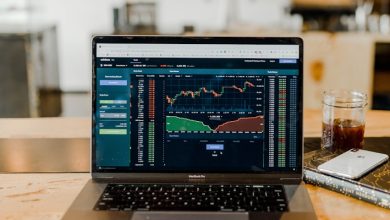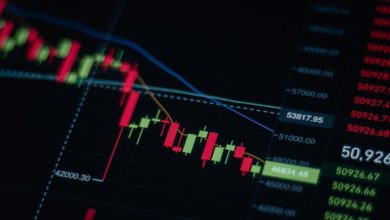The Risks of Centralized Exchanges and How to Mitigate Them

- Understanding the centralized exchange model
- Common risks associated with centralized exchanges
- Security vulnerabilities in centralized exchanges
- Regulatory risks and compliance challenges
- Strategies for reducing risks on centralized exchanges
- The importance of decentralized alternatives
Understanding the centralized exchange model
Centralized exchanges operate as intermediaries between buyers and sellers, holding custody of users’ funds and executing trades on their behalf. While this model offers convenience and liquidity, it also comes with inherent risks that users should be aware of.
One of the main risks of centralized exchanges is the potential for hacks and security breaches. Because these exchanges store large amounts of funds in a single location, they are prime targets for malicious actors looking to steal assets. Users should be cautious about the security measures implemented by exchanges and consider keeping only a portion of their funds on the platform.
Another risk is the lack of transparency and control that centralized exchanges provide to users. When trading on these platforms, users are essentially trusting the exchange to act in their best interest. This can lead to issues such as market manipulation, front-running, and unfair trading practices.
Furthermore, centralized exchanges are susceptible to regulatory pressure and government intervention. In some cases, exchanges have been forced to delist certain assets or comply with strict regulations, impacting users’ ability to trade freely. This lack of autonomy can be concerning for users who value decentralization and censorship resistance.
Despite these risks, centralized exchanges remain popular due to their ease of use and wide range of trading pairs. To mitigate the dangers associated with centralized exchanges, users can take steps such as enabling two-factor authentication, using strong passwords, and regularly withdrawing funds to a secure wallet. Additionally, users can research exchanges thoroughly before trading on them and consider using decentralized exchanges for added security.
Common risks associated with centralized exchanges
Centralized exchanges pose several risks to users due to their centralized nature, making them vulnerable to various security threats and operational issues. Some common risks associated with centralized exchanges include:
- Security breaches: Centralized exchanges are prime targets for hackers due to the large amount of funds stored in a single location. Security breaches can result in the loss of user funds and sensitive information.
- Regulatory risks: Centralized exchanges are subject to regulatory scrutiny and may face legal challenges in different jurisdictions. Changes in regulations can impact the operations of centralized exchanges and their users.
- Operational risks: Centralized exchanges are prone to operational issues such as system failures, downtime, and maintenance disruptions. These issues can prevent users from accessing their funds and executing trades.
- Counterparty risks: Users of centralized exchanges are exposed to counterparty risks as they rely on the exchange to hold and manage their funds. If the exchange goes bankrupt or faces insolvency, users may lose their funds.
- Market manipulation: Centralized exchanges can be susceptible to market manipulation by bad actors who exploit the lack of transparency and oversight. Users may experience unfair trading practices and price manipulation.
It is important for users to be aware of these risks and take steps to mitigate them by following best practices such as using strong passwords, enabling two-factor authentication, and diversifying their holdings across different exchanges. Additionally, users can consider using decentralized exchanges that do not hold user funds and offer a higher level of security and control over their assets.
Security vulnerabilities in centralized exchanges
Centralized exchanges pose significant security vulnerabilities due to their centralized nature, making them attractive targets for hackers and malicious actors. These vulnerabilities can result in various risks for users, including theft of funds, unauthorized access to personal information, and manipulation of trading activities.
One common security vulnerability in centralized exchanges is the risk of a cyber attack, where hackers exploit weaknesses in the exchange’s infrastructure to gain access to sensitive data or funds. These attacks can result in significant financial losses for users and damage the reputation of the exchange.
Another security vulnerability is the risk of insider threats, where employees or contractors of the exchange misuse their access to carry out fraudulent activities. This could involve unauthorized trading, theft of funds, or manipulation of prices to benefit certain traders at the expense of others.
Furthermore, centralized exchanges are also susceptible to regulatory risks, as they are subject to government regulations and oversight. Failure to comply with these regulations can result in fines, legal action, or even the shutdown of the exchange, leading to losses for users and disrupting the cryptocurrency market.
To mitigate these security vulnerabilities, users can take several steps to protect their funds and personal information. This includes using strong, unique passwords, enabling two-factor authentication, and regularly monitoring their accounts for any suspicious activity. Additionally, users can consider using decentralized exchanges or peer-to-peer trading platforms, which offer greater security and privacy compared to centralized exchanges.
Regulatory risks and compliance challenges
Regulatory risks and compliance challenges are significant concerns when it comes to centralized exchanges. These platforms are subject to various regulations imposed by governmental authorities in different jurisdictions. Failure to comply with these regulations can result in severe penalties, including fines and even shutdown of the exchange.
Centralized exchanges must adhere to anti-money laundering (AML) and know your customer (KYC) regulations to prevent illicit activities such as money laundering and terrorist financing. Non-compliance with these regulations can lead to legal consequences and damage the reputation of the exchange.
Moreover, centralized exchanges face the risk of regulatory changes that can impact their operations. Keeping up with evolving regulations requires continuous monitoring and updates to ensure compliance. This poses a challenge for exchanges operating in multiple jurisdictions with different regulatory requirements.
To mitigate regulatory risks and compliance challenges, centralized exchanges can implement robust AML and KYC procedures, conduct regular audits, and stay informed about regulatory developments. Working closely with legal advisors and regulatory experts can help exchanges navigate the complex regulatory landscape and ensure compliance.
Strategies for reducing risks on centralized exchanges
One of the key strategies for reducing risks on centralized exchanges is to diversify your holdings across multiple platforms. By spreading your assets across different exchanges, you can minimize the impact of potential security breaches or operational issues on any one platform. This approach can help protect your investments and reduce the overall risk of loss.
Another important strategy is to conduct thorough research before choosing a centralized exchange to trade on. Look for exchanges with a strong reputation for security and reliability, as well as transparent fee structures and responsive customer support. By selecting a reputable exchange, you can lower the likelihood of falling victim to fraud or other risks associated with less reputable platforms.
Additionally, consider using hardware wallets or cold storage solutions to store your cryptocurrencies when they are not actively being traded. By keeping your assets offline, you can reduce the risk of hacking or theft that is inherent to online storage solutions. Hardware wallets provide an extra layer of security for your investments and can help safeguard your funds in the event of a security breach on an exchange.
It is also essential to enable two-factor authentication (2FA) on your exchange accounts to add an extra layer of security. By requiring a second form of verification in addition to your password, 2FA can help prevent unauthorized access to your account and protect your assets from being compromised. This simple step can significantly reduce the risk of unauthorized transactions or account takeovers on centralized exchanges.
In conclusion, while centralized exchanges pose inherent risks to investors, there are several strategies that can be employed to mitigate these risks and protect your assets. By diversifying your holdings, conducting thorough research, using hardware wallets, and enabling 2FA, you can enhance the security of your investments and trade with greater peace of mind on centralized exchanges.
The importance of decentralized alternatives
Decentralized alternatives play a crucial role in mitigating the risks associated with centralized exchanges. By distributing control and ownership across a network of users rather than concentrating it in the hands of a single entity, decentralized platforms offer increased security and transparency. This decentralized approach reduces the likelihood of a single point of failure, as well as the potential for hacking or manipulation.
Furthermore, decentralized exchanges typically do not require users to deposit funds into a centralized wallet, eliminating the risk of losing assets due to exchange insolvency or security breaches. Instead, users retain control of their funds at all times, trading directly from their own wallets through smart contracts.
Decentralized alternatives also promote greater privacy and anonymity, as users are not required to undergo the same level of identity verification as on centralized exchanges. This can help protect individuals from potential data breaches or identity theft.
In addition, decentralized platforms often offer lower fees compared to their centralized counterparts, as they operate on a peer-to-peer basis without the need for intermediaries. This can result in cost savings for traders and investors, making decentralized exchanges a more attractive option for those looking to maximize their returns.



